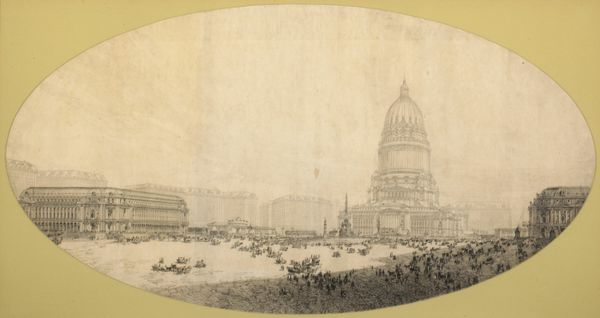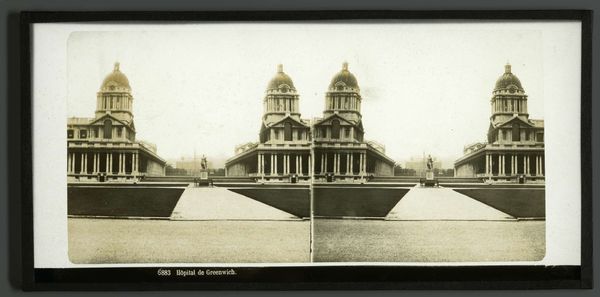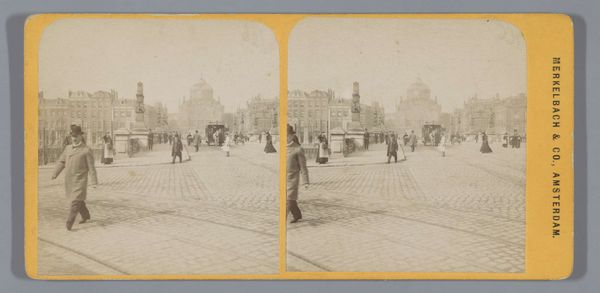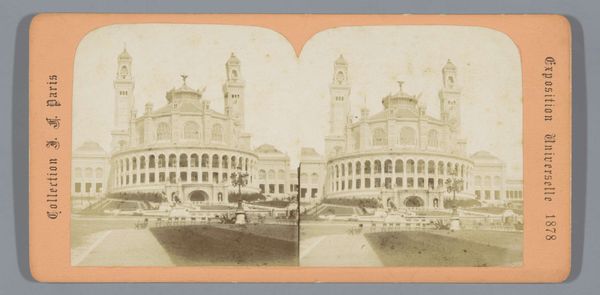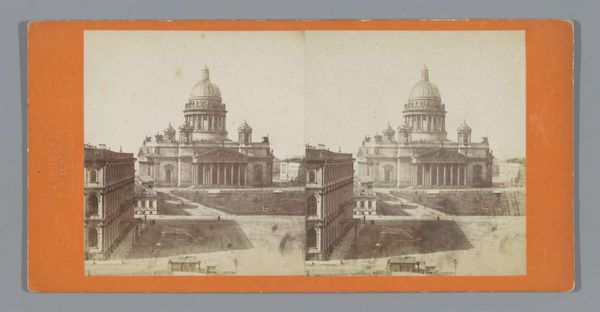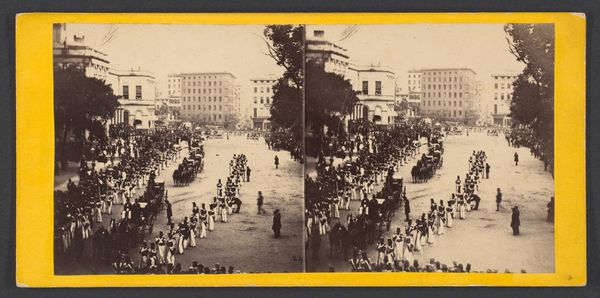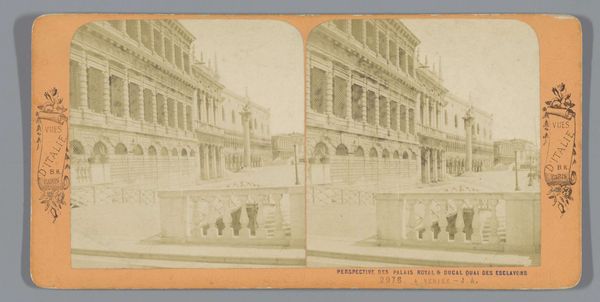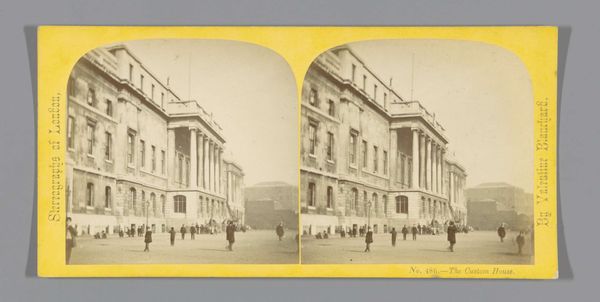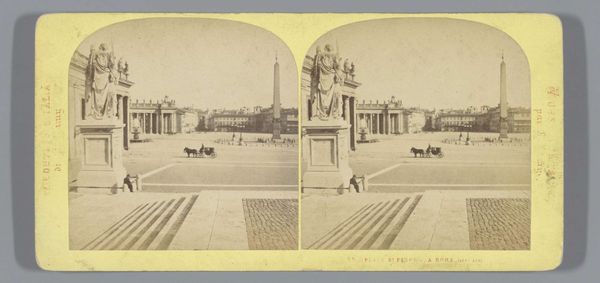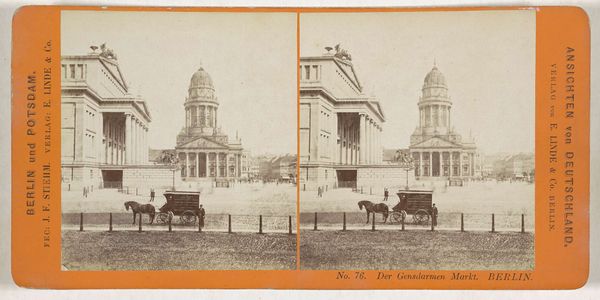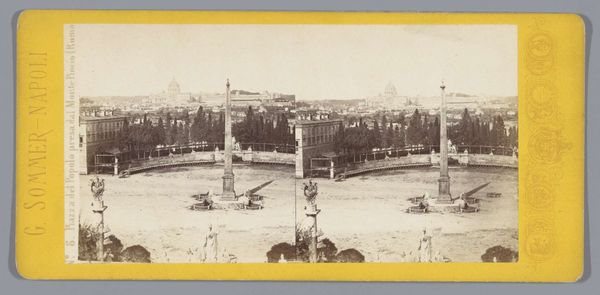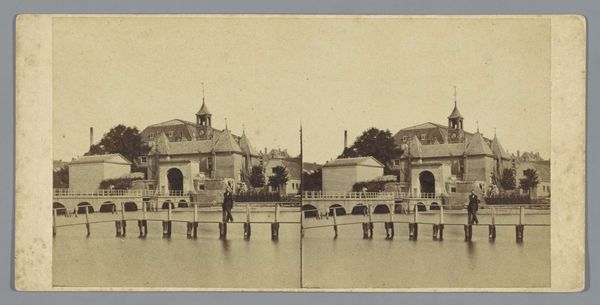
print, photography, gelatin-silver-print
# print
#
landscape
#
photography
#
gelatin-silver-print
#
cityscape
#
realism
Dimensions: height 88 mm, width 176 mm
Copyright: Rijks Museum: Open Domain
Curator: What an evocative image! This gelatin-silver print, taken in 1906, is titled "View of a Destroyed City Hall after the Earthquake in San Francisco." The city laid bare... it speaks volumes about resilience in the face of disaster, doesn’t it? Editor: Absolutely. The ruin of civic structure set against the purposeful stride of people gives this a particularly somber but not entirely hopeless atmosphere. The very composition directs your gaze skyward, drawing your eye to the damaged but still imposing dome. It also makes you ponder the use of the photograph: as a document of disaster or, perhaps, something that helps us consider a rebirth. Curator: Indeed. Consider the social and political landscape. The 1906 earthquake was a watershed moment for San Francisco. This photograph, likely distributed widely, served to document the devastation and probably acted as a prompt for federal intervention and philanthropic aid. Its narrative touches upon themes of inequality too—the disaster exacerbated existing class divides. Editor: Precisely. And the materiality of the photograph itself—the gelatin silver process allowed for mass production and distribution. The consumption of these images fueled a certain economy of disaster; one needs only to read Susan Sontag to draw out a line connecting such disaster images to broader themes of consumption. Curator: Tell me more about that… Editor: Well, the image becomes a commodity. People consumed these photographs—like they consume our news cycles—removed from any true context or consequence. Instead the image simply satisfies curiosity about other people's circumstances and distances the consumer from the actual, ongoing repercussions. The material—paper and silver— becomes, in turn, tied to human experience. Curator: That connects so powerfully to what I was thinking about. When considering images of San Francisco before the earthquake, compared with images like this one, what kind of ideological transformation happened, if any, in the Western, white understanding of the US as indestructible? I think about Indigenous relations in California and I am curious about what kind of disaster narrative gets silenced through such a picture. Editor: Yes, yes! A truly good photograph offers us a multi-directional framework from which to examine historical circumstances as well as our modern relationship to trauma, representation, and labor practices. The destruction—rendered flat in silver halide—allows for deep contemplation on process. Curator: For sure. This particular work pushes the discourse beyond aesthetics into realms of collective trauma, material processes, and the social dimensions of recovery. I can’t help but find something beautiful in this ruin. Editor: There's beauty in truth. I have never had such a good view into these sorts of silver processes. Thank you!
Comments
No comments
Be the first to comment and join the conversation on the ultimate creative platform.
